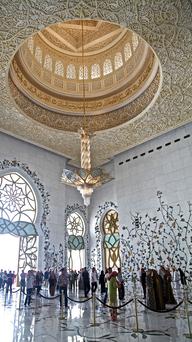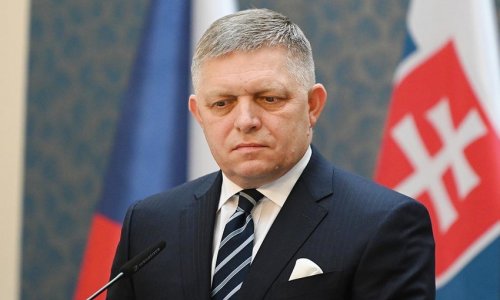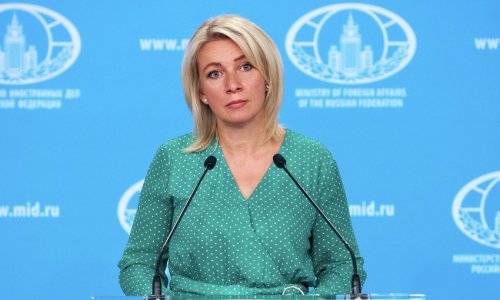In many of the world's most beautiful mosques, visiting hours are limited and non-believers must tread wearily. But not Abu Dhabi's Sheikh Zayed Grand Mosque. The gleaming white, fairytale-like structure, unveiled in 2007, was built with the express purpose of promoting interactions between not only Muslim cultures, but between Islam and other religions as well.
Diversity is reflected by the mosque’s architects (they were British, Italian and Emeriti), by the materials used (tiles were sourced from Turkey, wool from New Zealand and crystals from Germany) and by the open-door policy that harkens back to the golden age of Islam. It now attracts more than one million visitors a year. “Everyone is welcome here, whether they are Jewish or Christian or atheist,” said mosque tour guide Leila Ahmed. “That is what's so special about this place. Sheik Zayed's vision for the mosque was not just a place where Muslims can pray, but a platform for cultural exchange.” (Ian Lloyd Neubauer)Sheikh Zayed's MausoleumSheikh Zayed bin Sultan Al Nahyan rose to prominence in the 1940s for his uncanny ability to negotiate peace between Bedouin tribes in the Arabian Desert. In 1966, he became founding president of Abu Dhabi. In 1971, he established a federation with the Emirate of Dubai that led to the formation of the United Arab Emirates – a new nation combining seven emirates – with himself as president. Zayed used revenue from Abu Dhabi's vast oil reserves to build skyscrapers, world-class infrastructure and cultural treasures like the Grand Mosque, for which construction began in 1996. Zayed died in 2004, three years before the Grand Mosque was completed. He is buried in a mausoleum, pictured here, on the mosque’s north side. (Ian Lloyd Neubauer)The central courtyardParamount to Zayed's vision for the Grand Mosque was integrating architectural styles from different Muslim civilisations to celebrate cultural diversity. The mosque’s main courtyard – a gleaming white space edged by reflective pools and inlaid columns with enough space for 30,000 people – was inspired by Pakistan's Badshahi Mosque and Morocco's Hassan II Mosque. In its corners stand four 107m-high minarets that bring together three geometrical styles from three different civilisations: Mamluk cubes from Egypt at ground level, Fatimid-style hexagons from North Africa in the middle and, on top, cylinders inspired by Turkey’s Ottoman architecture. (Ian Lloyd Neubauer)Artistic archwaysThe Grand Mosque has 82 onion-top domes of seven different sizes inspired by the Badshahi Mosque of Lahore, Pakistan to epitomise the beauty, passion and grandeur of Islam's Mughal era. Its curved archways, seen here, reflect quintessentially Moorish, or North African Islamic, architecture. Visitors can learn more about the domes’ construction on free guided tours that take place up to four times daily. (Ian Lloyd Neubauer)The foyerVisitors must remove their shoes before entering the foyer and adhere to a dress code: ankle-length pants and closed shoes for men; for women, arms, legs and heads must be covered (headscarves are on loan for free in the car park). Note the Arabic calligraphy encircling the hollow inside of the onion-top dome. Giving a verse from the Koran, each letter is painted with gold leaf and in a calligraphy style known as An-Naskh, the most common font in printed Arabic. (Ian Lloyd Neubauer)The foyer's chandelierThe Grand Mosque houses seven giant chandeliers made by German manufacturing company Faustig, one of 38 different contractors employed for the mosque’s construction. They weigh eight to 12 metric tonnes each and are supported by steel cables that can hold up to 36 tonnes. (Ian Lloyd Neubauer)The main prayer hallThe foyer leads to the main prayer hall – a hangar-sized space with two side halls (one reserved exclusively for female worshippers) and a combined capacity of 10,000 people. The main hall is supported by 96 soaring columns, each clad with Macedonian marble and inlaid with mother-of-pearl and other semi-precious stones. Inside each column is an air conditioner the size of a minibus. “I personally interpret this room as paradise,” Ahmed said. “Because in the Koran, paradise is described as a garden where believers are at one with God.” (Ian Lloyd Neubauer)The main chandelierThe largest of the Grand Mosque's seven chandeliers, the lamp at the centre of the main prayer hall is modelled after the date palm trees that are seen everywhere in the Emirates. It was crafted from stainless steel and brass, both gilded with 40kg of 24-carat gold. Almost 40 million Swarovski crystals were used to adorn the mosque’s seven chandeliers. (Ian Lloyd Neubauer)Looking up at the main chandelierThe main chandelier is crowned with luminous red and green crystal balls to represent the date palm’s fruit. Trees are the one item Abu Dhabi both lacks and cannot buy: the only form of greenery tough enough to withstand the country’s lack of rain and the summer’s furnace-like summer temperatures, which average 41C to 43C, are date palm trees. The trees are such an important part of Emiriti culture that Abu Dhabi hosts a Date Palm Festival every November. (Ian Lloyd Neubauer)The carpet of all carpetsDesigned by third-generation carpet master Dr Ali Khaliqi of Iran, the main prayer hall is home to the largest hand-knotted carpet in the world – a tapestry measuring 5,700sqm. It took 1,200 artisans 16 months to make this carpet; for transport from Iran, it had to be cut into nine pieces and brought in two jumbo jets. It is made primarily of New Zealand wool. Note the medallion-shaped centrepiece (pictured), which is an exact replication of the main chandelier’s date palms. (Ian Lloyd Neubauer)Wall of AllahArabic calligraphy adorns the Qibla wall facing Mecca in the main prayer hall, where the 99 names that Muslims attribute to God (such as Allah, the Creator and the All-Knowing) are engraved and highlighted with subtle fibre-optic lighting. The semi-circular niche is inlaid with stripes of 24-carat gold. “Before microphones and speakers were invented, niches like this were used to project the imam's voice during Friday prayers,” Ahmed said. (Ian Lloyd Neubauer)Reflective poolsThe mosque is surrounded by reflective tiled pools that glow under floodlights at night. The pools feature prominently in the thousands of photos sent to the Grand Mosque each year by visitors hoping the win the annual Spaces of Light photo competition. The winning images are displayed in the lobby of the Emirates Palace Hotel and published in Spaces of Light, a hardback anthology sold throughout Abu Dhabi gift shops. (Ian Lloyd Neubauer)(BBC)ANN.Az
Follow us !











